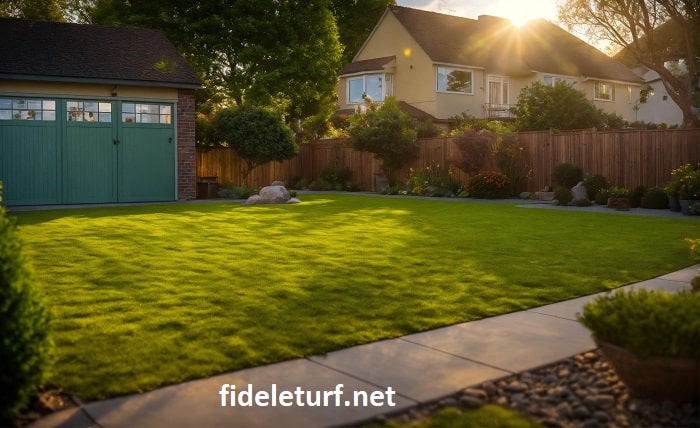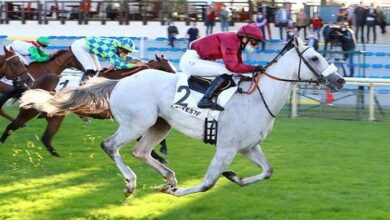Turf: The Essential Guide to the Grass in Horse Racing and Beyond

Turf, commonly referred to as the grass surface found on racetracks, is a vital component in the world of horse racing and beyond. This comprehensive guide will explore the various aspects of turf, its importance in different contexts, and how it impacts sports, landscaping, and environmental sustainability. From horse racing to garden design, turf plays a crucial role in many areas of life.
What is Turf?
Turf refers to the layer of grass and soil that forms the surface of a lawn or a racetrack. In the context of horse racing, turf is the grass track on which horses race. The quality and condition of the turf are essential for ensuring fair and safe competition. Outside of racing, turf is also used in landscaping and sports fields, where it provides an attractive and functional surface for various activities.
The Role of Turf in Horse Racing
In horse racing, turf plays a critical role in the performance and safety of the horses. Turf tracks are preferred by many horse racing enthusiasts due to their softer surface, which can be gentler on the horses’ joints and legs compared to dirt tracks. The condition of the turf, including factors like length, firmness, and moisture, can significantly impact the outcome of races. Proper maintenance of the turf is essential for ensuring that it meets the high standards required for competitive racing.
Types of Turf Used in Horse Racing
There are several types of turf used in horse racing, each with its unique characteristics. The most common types include Kentucky Bluegrass, Bermuda Grass, and Fescue. Kentucky Bluegrass is known for its lush appearance and durability, making it a popular choice for many racetracks. Bermuda Grass is highly resistant to heat and drought, making it suitable for warmer climates. Fescue is valued for its ability to withstand heavy foot traffic and recover quickly from wear and tear. Each type of turf offers different benefits and requires specific maintenance practices.
Maintaining Turf for Optimal Performance
Maintaining turf is essential for ensuring its optimal performance in horse racing and other applications. Regular mowing, watering, and fertilizing are crucial for keeping the turf healthy and in good condition. Additionally, addressing issues such as thatch buildup, pests, and diseases is important for maintaining the quality of the turf. For horse racing tracks, specialized equipment and techniques are often used to ensure that the turf remains in top condition throughout the racing season.
Turf in Landscaping and Gardening
Beyond horse racing, turf plays a significant role in landscaping and gardening. Turf lawns are a popular choice for homeowners and businesses looking to create an attractive and functional outdoor space. Turf provides a soft, green surface that enhances the aesthetic appeal of gardens and lawns while also serving practical purposes such as erosion control and temperature regulation. Choosing the right type of turf for specific landscaping needs and maintaining it properly are key factors in achieving a beautiful and functional garden.
Artificial Turf vs. Natural Turf
Artificial turf has become a popular alternative to natural turf in various applications. Unlike natural turf, which requires regular maintenance, artificial turf offers a low-maintenance, durable option that can withstand heavy use. Artificial turf is commonly used in sports fields, playgrounds, and residential lawns. While it eliminates the need for mowing and watering, it is important to consider factors such as heat retention and environmental impact when choosing between artificial and natural turf.
Environmental Impact of Turf
The environmental impact of turf, both natural and artificial, is an important consideration. Natural turf provides several environmental benefits, including carbon sequestration, air purification, and habitat for wildlife. However, maintaining natural turf often requires the use of water, fertilizers, and pesticides, which can have negative environmental effects. Artificial turf, on the other hand, does not require water or chemicals but can contribute to heat island effects and plastic pollution. Understanding the environmental impact of different types of turf can help in making more sustainable choices.
Turf in Sports and Recreation
Turf is not limited to horse racing and landscaping; it also plays a significant role in sports and recreation. Many sports fields, including those for football, soccer, and golf, use turf to provide a suitable playing surface. The quality of the turf can affect the performance and safety of athletes, making proper maintenance and management crucial. Sports turf is often designed to withstand heavy use and provide consistent playing conditions, ensuring that athletes can perform at their best.
Innovations in Turf Technology
Advancements in turf technology have led to the development of new products and techniques aimed at improving the quality and performance of turf. Innovations include the development of more durable and realistic artificial turf, advanced irrigation systems, and eco-friendly fertilizers. These advancements are designed to address common issues associated with turf management and enhance its functionality in various applications. Keeping up with the latest turf technologies can help in making informed decisions about turf selection and maintenance.
The Future of Turf
The future of turf is likely to be shaped by ongoing research and innovation in turf management and technology. As environmental concerns and sustainability become increasingly important, there will be a focus on developing more eco-friendly turf options and practices. Advances in materials, maintenance techniques, and design will continue to influence how turf is used in horse racing, landscaping, sports, and other areas. The evolution of turf technology promises to enhance its benefits and address challenges associated with its use.
Conclusion
Turf is a versatile and essential component in various fields, from horse racing and landscaping to sports and recreation. Understanding the different types of turf, their maintenance requirements, and their environmental impact is crucial for making informed decisions and ensuring optimal performance. Whether you are involved in horse racing, gardening, or sports, the quality and condition of turf play a significant role in achieving desired outcomes. As turf technology continues to advance, it will offer new opportunities and solutions for enhancing its functionality and sustainability.
FAQ
1. What is turf, and where is it used?
Turf is the grass and soil layer that forms the surface of lawns, sports fields, and racetracks. It is used in horse racing, landscaping, gardening, and various sports to provide a functional and attractive surface.
2. What are the different types of turf used in horse racing?
Common types of turf used in horse racing include Kentucky Bluegrass, Bermuda Grass, and Fescue. Each type has unique characteristics and benefits, such as durability, heat resistance, and the ability to recover from wear and tear.
3. How is turf maintained for optimal performance?
Maintaining turf involves regular mowing, watering, and fertilizing, as well as addressing issues like thatch buildup, pests, and diseases. Proper maintenance ensures that the turf remains healthy and performs well in its intended use.
4. What are the environmental impacts of natural and artificial turf?
Natural turf provides benefits like carbon sequestration and habitat for wildlife but requires water, fertilizers, and pesticides. Artificial turf is low-maintenance and does not require water or chemicals but can contribute to heat island effects and plastic pollution.
5. What innovations are being made in turf technology?
Innovations in turf technology include the development of more realistic and durable artificial turf, advanced irrigation systems, and eco-friendly fertilizers. These advancements aim to improve turf quality, performance, and sustainability.




